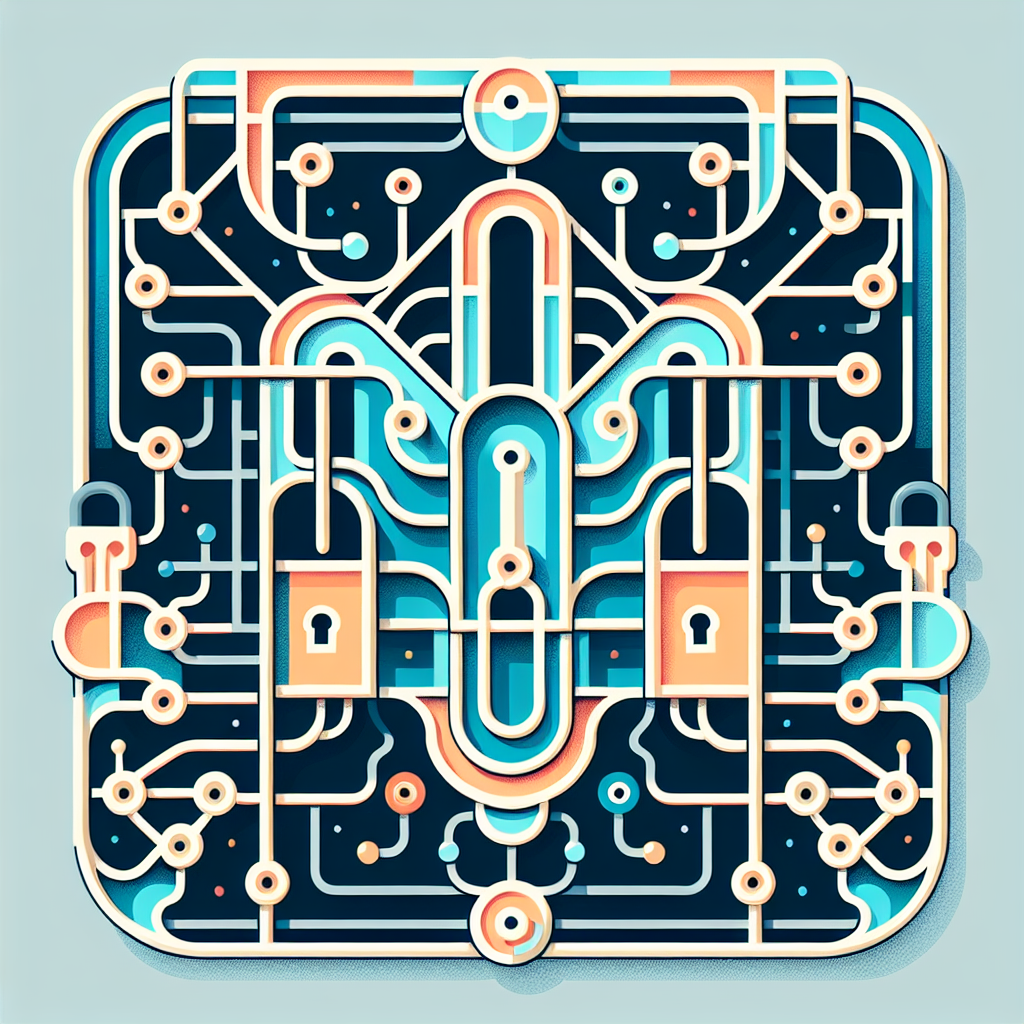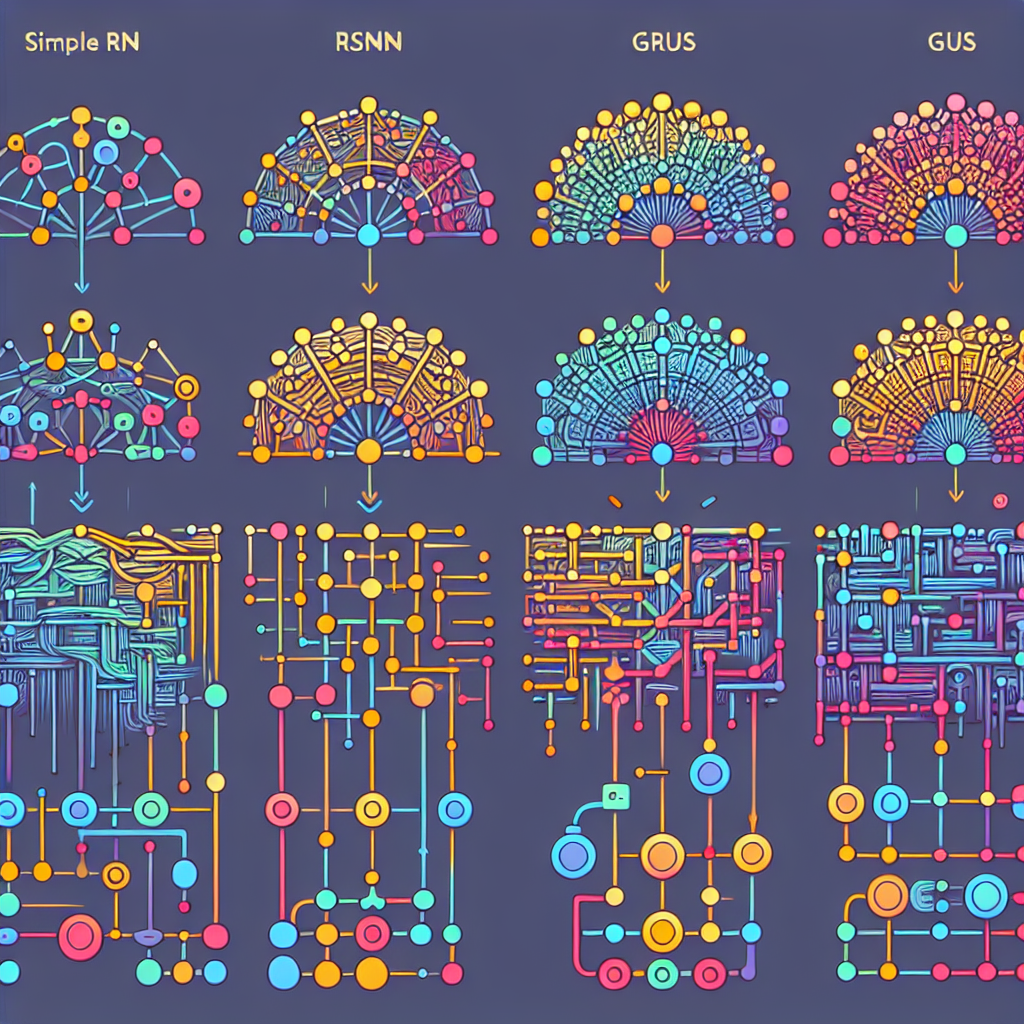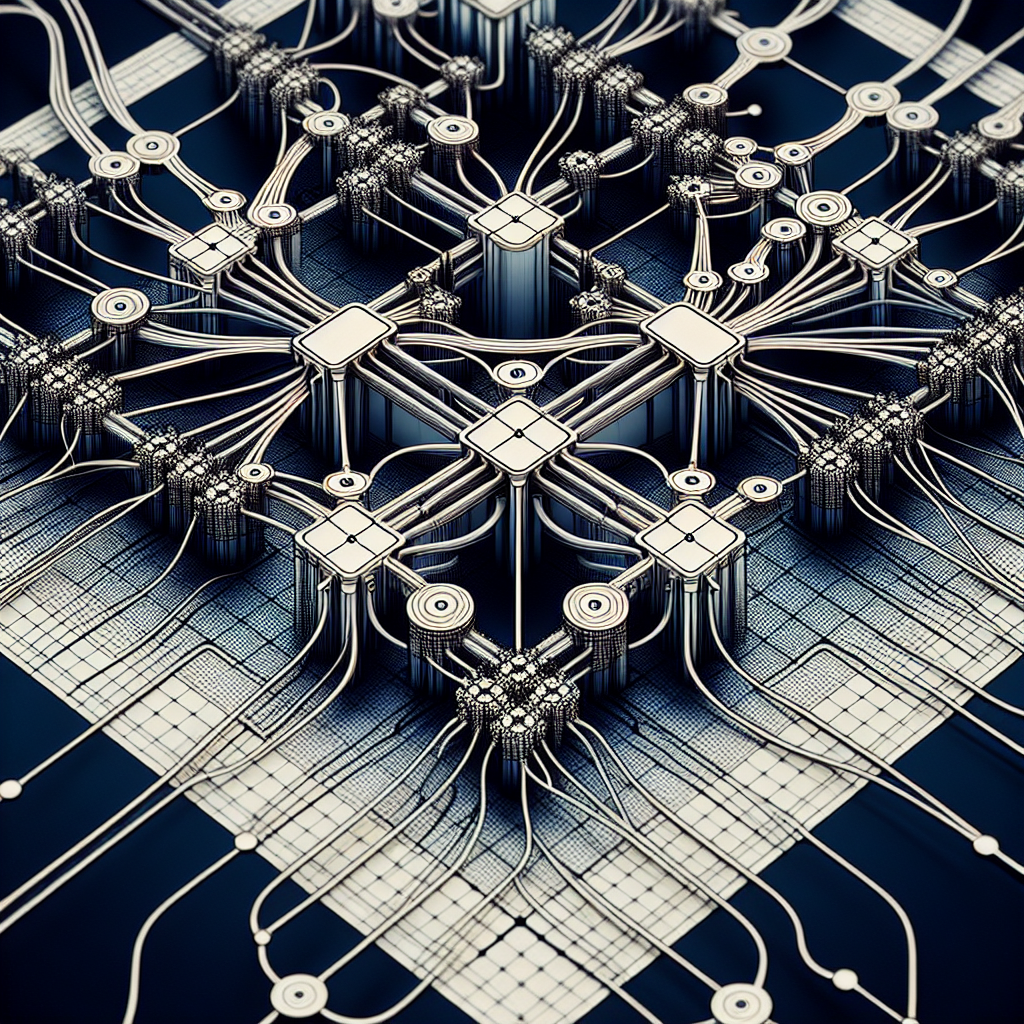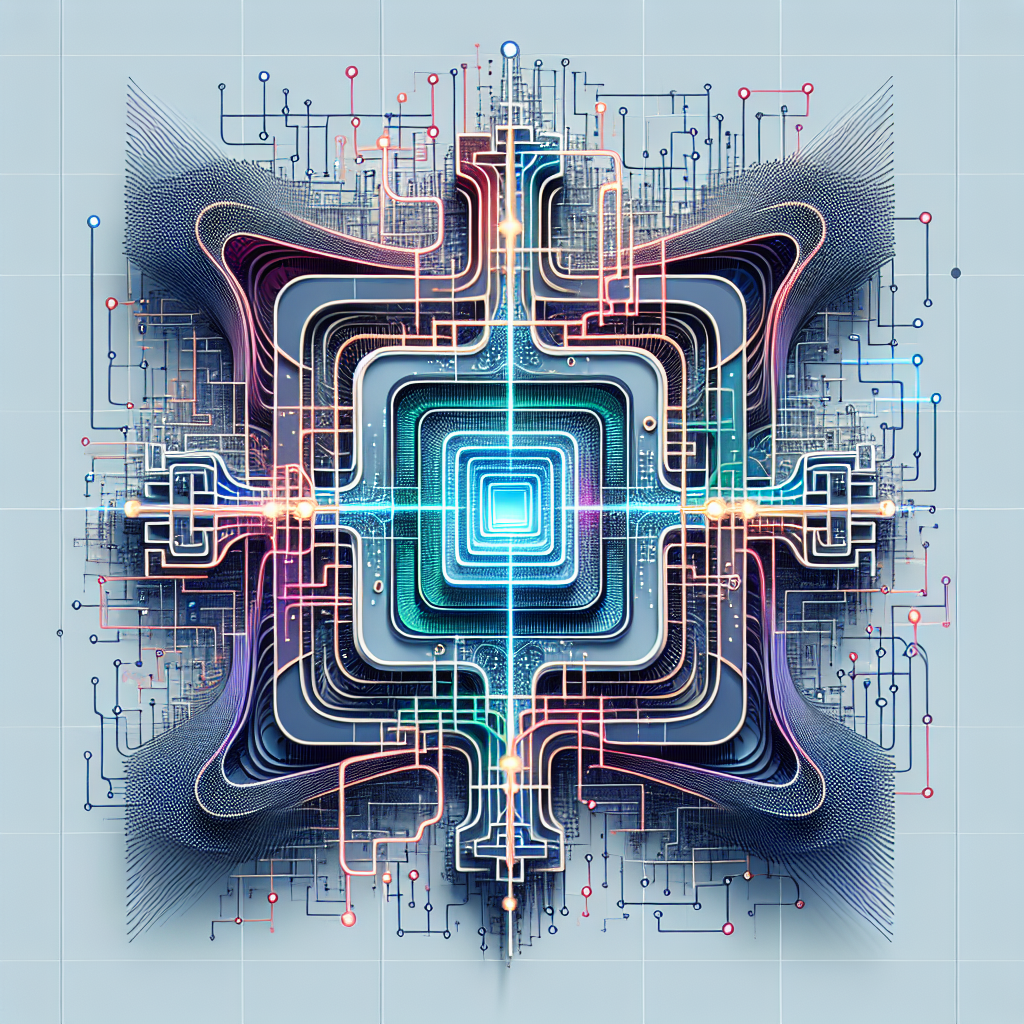Your cart is currently empty!
Tag: Gated

Improving Performance with Gated Recurrent Units (GRUs) in Neural Networks
Neural networks have revolutionized the field of artificial intelligence and machine learning by enabling computers to learn and make decisions in a way that mimics the human brain. One type of neural network that has gained popularity in recent years is the Gated Recurrent Unit (GRU), which is a type of recurrent neural network that is well-suited for sequential data processing tasks.GRUs are a variation of the more commonly used Long Short-Term Memory (LSTM) networks, which are also designed to handle sequential data. The key difference between GRUs and LSTMs is that GRUs have fewer parameters, making them faster and more efficient to train. This makes them particularly well-suited for tasks where large amounts of data need to be processed quickly, such as natural language processing, speech recognition, and time series forecasting.
One of the main advantages of using GRUs in neural networks is their ability to capture long-range dependencies in the input data. Traditional neural networks, such as feedforward networks, are limited in their ability to capture temporal dependencies in sequential data. GRUs, on the other hand, are designed to remember information from previous time steps, allowing them to better capture the underlying patterns in the data.
To improve the performance of GRUs in neural networks, there are several strategies that can be employed. One common approach is to tune the hyperparameters of the GRU model, such as the learning rate, batch size, and number of hidden units. By experimenting with different hyperparameter settings, researchers can optimize the performance of the GRU model for a specific task.
Another strategy for improving the performance of GRUs is to use techniques such as dropout and batch normalization. Dropout is a regularization technique that helps prevent overfitting by randomly dropping out a fraction of the neurons during training. Batch normalization, on the other hand, helps stabilize the training process by normalizing the input to each layer of the network.
In addition, researchers can also explore different architectures for GRU networks, such as stacking multiple layers of GRUs or combining them with other types of neural networks, such as convolutional neural networks. By experimenting with different architectures, researchers can further improve the performance of GRUs for a specific task.
Overall, Gated Recurrent Units (GRUs) are a powerful tool for processing sequential data in neural networks. By optimizing hyperparameters, using regularization techniques, and exploring different architectures, researchers can improve the performance of GRUs and achieve better results in tasks such as natural language processing, speech recognition, and time series forecasting. With further research and development, GRUs are likely to continue to play a key role in advancing the field of artificial intelligence and machine learning.
#Improving #Performance #Gated #Recurrent #Units #GRUs #Neural #Networks,recurrent neural networks: from simple to gated architectures
A Deep Dive into Different Types of Gated Architectures in RNNs
Recurrent Neural Networks (RNNs) have become a popular choice for many sequence modeling tasks, such as natural language processing, time series analysis, and speech recognition. One of the key features that make RNNs powerful is their ability to capture long-range dependencies in sequential data. However, traditional RNNs suffer from the vanishing gradient problem, which limits their ability to learn long-term dependencies.To address this issue, researchers have developed various gated architectures for RNNs, which allow the network to selectively update and forget information at each time step. These gated architectures have been instrumental in improving the performance of RNNs on a wide range of tasks.
One of the most well-known gated architectures is the Long Short-Term Memory (LSTM) network, which was proposed by Hochreiter and Schmidhuber in 1997. The LSTM network introduces three gating mechanisms – the input gate, forget gate, and output gate – which control the flow of information through the network. The input gate decides which information to update, the forget gate decides which information to forget, and the output gate decides which information to output.
Another popular gated architecture is the Gated Recurrent Unit (GRU), which was proposed by Cho et al. in 2014. The GRU simplifies the LSTM architecture by combining the input and forget gates into a single update gate. This reduces the number of parameters in the network and makes training faster and more efficient.
In addition to LSTM and GRU, there are several other gated architectures that have been proposed in recent years. Some of these include the Clockwork RNN, which divides the hidden state into multiple modules with different update rates, and the Depth-Gated RNN, which introduces depth gates to control the flow of information across different layers of the network.
Overall, gated architectures have revolutionized the field of sequence modeling by enabling RNNs to effectively capture long-range dependencies in sequential data. By selectively updating and forgetting information at each time step, gated architectures have significantly improved the performance of RNNs on a wide range of tasks. Researchers continue to explore new gated architectures and techniques to further enhance the capabilities of RNNs and push the boundaries of what is possible in sequence modeling.
#Deep #Dive #Types #Gated #Architectures #RNNs,recurrent neural networks: from simple to gated architectures
Unleashing the Potential of Gated Architectures in Recurrent Neural Networks
Recurrent Neural Networks (RNNs) have gained popularity in recent years due to their ability to effectively model sequential data. These networks have been successfully applied in a wide range of tasks such as natural language processing, speech recognition, and time series prediction. However, one of the challenges in training RNNs is the issue of vanishing or exploding gradients, which can make it difficult for the network to learn long-range dependencies.One potential solution to this problem is the use of gated architectures, which have been shown to be effective in mitigating the vanishing gradient problem in RNNs. Gated architectures, such as Long Short-Term Memory (LSTM) and Gated Recurrent Unit (GRU), introduce gating mechanisms that control the flow of information within the network. These gates are able to selectively update and reset the hidden state of the network, allowing it to remember long-term dependencies while avoiding the vanishing gradient problem.
LSTM, in particular, has been widely used in various applications due to its ability to capture long-range dependencies in sequential data. The architecture of an LSTM cell consists of three gates – input gate, forget gate, and output gate – that control the flow of information in and out of the cell. By selectively updating the hidden state of the cell, LSTM is able to effectively model complex temporal dependencies in the data.
Similarly, GRU is another type of gated architecture that has been shown to perform well in sequential data tasks. GRU simplifies the architecture of LSTM by combining the input and forget gates into a single update gate, which helps reduce the computational complexity of the network. Despite its simpler design, GRU has been shown to achieve comparable performance to LSTM in many applications.
The effectiveness of gated architectures in RNNs lies in their ability to learn long-range dependencies while avoiding the vanishing gradient problem. By introducing gates that control the flow of information, these architectures are able to selectively update the hidden state of the network, allowing it to retain important information over long sequences. This makes gated architectures well-suited for tasks that involve modeling complex temporal dependencies, such as language modeling, speech recognition, and music generation.
In conclusion, gated architectures have shown great promise in unleashing the potential of RNNs by addressing the vanishing gradient problem and enabling the network to learn long-range dependencies. LSTM and GRU are two popular gated architectures that have been successfully applied in various applications, showcasing their effectiveness in modeling sequential data. As researchers continue to explore new architectures and techniques for improving RNNs, gated architectures are likely to play a key role in advancing the capabilities of these networks in the future.
#Unleashing #Potential #Gated #Architectures #Recurrent #Neural #Networks,recurrent neural networks: from simple to gated architectures
From Simple RNNs to Gated Architectures: An Overview of Recurrent Neural Networks
Recurrent Neural Networks (RNNs) have become increasingly popular in recent years due to their ability to effectively model sequential data. From simple RNNs to more complex gated architectures, these networks have revolutionized various fields such as natural language processing, speech recognition, and time series forecasting.The basic idea behind RNNs is to maintain a hidden state that captures information about the previous inputs in the sequence. This hidden state is updated at each time step using a recurrent weight matrix that allows the network to remember past information and make predictions about future inputs. While simple RNNs have shown promise in tasks such as language modeling and sentiment analysis, they suffer from the vanishing gradient problem, where gradients become increasingly small as they are backpropagated through time.
To address this issue, researchers have developed more sophisticated architectures such as Long Short-Term Memory (LSTM) and Gated Recurrent Unit (GRU) networks. These gated architectures include additional gating mechanisms that control the flow of information within the network, allowing them to better capture long-range dependencies in the data.
LSTM networks, for example, include three gates – input, forget, and output – that regulate the flow of information in and out of the cell state. This allows the network to store information for longer periods of time and make more accurate predictions. GRU networks, on the other hand, combine the forget and input gates into a single update gate, simplifying the architecture while still achieving comparable performance to LSTMs.
Overall, gated architectures have significantly improved the performance of RNNs in a wide range of tasks. They have become the go-to choice for many researchers and practitioners working with sequential data, and have even been successfully applied to tasks such as machine translation and image captioning.
In conclusion, from simple RNNs to gated architectures, recurrent neural networks have come a long way in a relatively short amount of time. These networks continue to be a powerful tool for modeling sequential data and are likely to play a key role in the future of artificial intelligence.
#Simple #RNNs #Gated #Architectures #Overview #Recurrent #Neural #Networks,recurrent neural networks: from simple to gated architectures
The Future of Recurrent Neural Networks: Gated Architectures and Beyond
Recurrent Neural Networks (RNNs) have been a powerful tool in the field of deep learning, particularly for tasks involving sequential data such as text or time series analysis. However, traditional RNNs have limitations in terms of capturing long-term dependencies and mitigating the vanishing gradient problem. This has led to the development of more sophisticated architectures known as gated RNNs, such as Long Short-Term Memory (LSTM) and Gated Recurrent Unit (GRU), which have shown significant improvements in performance.Gated architectures, with their ability to selectively update and forget information, have been instrumental in addressing the challenges of traditional RNNs. LSTM, for example, uses a system of gates to control the flow of information within the network, allowing it to retain important information over longer sequences. GRU, on the other hand, simplifies the architecture by combining the forget and input gates into a single update gate, making it computationally more efficient.
The success of gated RNNs has sparked interest in exploring even more advanced architectures that can further enhance the capabilities of recurrent networks. One promising direction is the use of attention mechanisms, which allow the network to focus on specific parts of the input sequence that are most relevant to the task at hand. This can greatly improve the network’s ability to capture long-range dependencies and make more informed predictions.
Another area of research is the development of different types of gating mechanisms that can better adapt to different types of data and tasks. For example, researchers have been exploring the use of different activation functions and gating mechanisms that can better handle different types of sequential data, such as audio, video, or symbolic data.
Furthermore, there is ongoing research into improving the training and optimization of recurrent networks, such as the use of better initialization schemes, regularization techniques, and optimization algorithms. This is crucial for ensuring that the network can effectively learn from the data and generalize well to unseen examples.
Overall, the future of recurrent neural networks is bright, with continued advancements in gated architectures and beyond. By incorporating new ideas and techniques, researchers are pushing the boundaries of what RNNs can achieve, opening up exciting possibilities for applications in a wide range of fields, from natural language processing to robotics. With ongoing research and innovation, we can expect to see even more powerful and versatile recurrent networks in the years to come.
#Future #Recurrent #Neural #Networks #Gated #Architectures,recurrent neural networks: from simple to gated architectures
Enhancing Performance with Advanced Gated Architectures in Recurrent Neural Networks
Recurrent Neural Networks (RNNs) have been widely used in various applications such as natural language processing, speech recognition, and time series prediction. However, traditional RNNs suffer from the vanishing gradient problem, which limits their ability to capture long-range dependencies in sequential data. To address this issue, researchers have proposed advanced gated architectures such as Long Short-Term Memory (LSTM) and Gated Recurrent Unit (GRU).These advanced gated architectures have shown significant improvements in performance compared to traditional RNNs. LSTM, for example, uses a memory cell and three gates (input gate, forget gate, and output gate) to better capture long-term dependencies in sequential data. GRU, on the other hand, simplifies the architecture by combining the forget and input gates into a single update gate, making it computationally more efficient.
One of the key advantages of advanced gated architectures is their ability to effectively model long-term dependencies in sequential data. This is especially important in applications such as machine translation or speech recognition, where understanding the context of the input data is crucial for accurate predictions. By incorporating memory cells and gating mechanisms, LSTM and GRU can remember important information over long sequences, leading to better performance in tasks that require capturing temporal dependencies.
In addition to improving performance, advanced gated architectures also address the issue of vanishing gradients in traditional RNNs. The gating mechanisms in LSTM and GRU help to alleviate the vanishing gradient problem by allowing the network to learn which information to retain and which information to discard. This enables the model to effectively propagate gradients through time, leading to more stable training and better convergence.
Overall, advanced gated architectures have proven to be a powerful tool for enhancing performance in RNNs. By incorporating memory cells and gating mechanisms, LSTM and GRU can effectively capture long-term dependencies in sequential data, address the vanishing gradient problem, and improve overall performance in various applications. As researchers continue to explore new architectures and techniques for RNNs, we can expect even further improvements in performance and capabilities in the future.
#Enhancing #Performance #Advanced #Gated #Architectures #Recurrent #Neural #Networks,recurrent neural networks: from simple to gated architectures
Building More Effective Models with Gated Architectures in Recurrent Neural Networks
Recurrent Neural Networks (RNNs) have become a popular choice for modeling sequential data in various fields such as natural language processing, speech recognition, and time series analysis. However, traditional RNNs suffer from the problem of vanishing or exploding gradients, which can make it difficult for the model to learn long-range dependencies in the data.To address this issue, researchers have developed a new class of RNNs known as gated architectures, which include models such as Long Short-Term Memory (LSTM) and Gated Recurrent Unit (GRU). These models use gating mechanisms to control the flow of information through the network, allowing them to capture long-term dependencies more effectively.
One of the key advantages of gated architectures is their ability to prevent the vanishing gradient problem by incorporating mechanisms that regulate the flow of information through the network. For example, in an LSTM model, gates are used to control the flow of information into and out of the memory cell, allowing the model to selectively remember or forget information as needed.
Another advantage of gated architectures is their ability to learn complex patterns in the data more effectively. By controlling the flow of information through the network, gated architectures are able to capture dependencies over longer sequences, making them well-suited for tasks that require modeling long-range dependencies.
Building more effective models with gated architectures in RNNs involves several key steps. First, it is important to choose the right architecture for the task at hand. LSTM and GRU models are popular choices for many applications, but other gated architectures such as the Gated Feedback RNN (GFRNN) or the Minimal Gated Unit (MGU) may be more suitable for certain tasks.
Next, it is important to properly initialize the parameters of the model and train it using an appropriate optimization algorithm. Gated architectures can be more complex than traditional RNNs, so it is important to carefully tune the hyperparameters of the model and monitor its performance during training.
Finally, it is important to evaluate the performance of the model on a validation set and fine-tune it as needed. Gated architectures can be powerful tools for modeling sequential data, but they require careful attention to detail in order to achieve optimal performance.
In conclusion, gated architectures offer a powerful solution to the vanishing gradient problem in RNNs and allow for more effective modeling of long-range dependencies in sequential data. By carefully choosing the right architecture, training the model properly, and fine-tuning its performance, researchers can build more effective models with gated architectures in RNNs.
#Building #Effective #Models #Gated #Architectures #Recurrent #Neural #Networks,recurrent neural networks: from simple to gated architectures
A Deep Dive into Different Gated Architectures in Recurrent Neural Networks
Recurrent Neural Networks (RNNs) have gained popularity in recent years due to their ability to handle sequential data and time series analysis tasks effectively. One key aspect of RNNs is their ability to remember past information through the use of hidden states. However, traditional RNNs suffer from the vanishing gradient problem, which makes it difficult for them to capture long-range dependencies in the data.To address this issue, researchers have developed different gated architectures for RNNs, which allow the network to selectively update its hidden states based on the input at each time step. These gated architectures have proven to be highly effective in capturing long-range dependencies and have significantly improved the performance of RNNs in various tasks.
One of the most popular gated architectures for RNNs is the Long Short-Term Memory (LSTM) network. LSTM networks have an additional memory cell and three gates – input gate, forget gate, and output gate. The input gate controls how much information from the current input should be added to the memory cell, the forget gate controls how much information from the previous hidden state should be forgotten, and the output gate controls how much of the memory cell should be output at each time step. This architecture allows LSTM networks to learn long-range dependencies in the data and has been widely used in natural language processing, speech recognition, and time series analysis tasks.
Another widely used gated architecture for RNNs is the Gated Recurrent Unit (GRU). GRU networks have two gates – reset gate and update gate. The reset gate controls how much of the previous hidden state should be reset, and the update gate controls how much of the new hidden state should be updated. GRU networks are simpler than LSTM networks and have been shown to be equally effective in capturing long-range dependencies in the data. They are often preferred in applications where computational efficiency is a concern.
In addition to LSTM and GRU, there are several other gated architectures for RNNs, such as the Clockwork RNN and the Neural Turing Machine. Each of these architectures has its own strengths and weaknesses and is suited for different types of tasks.
In conclusion, gated architectures have revolutionized the field of RNNs by enabling them to capture long-range dependencies in the data effectively. LSTM and GRU are the most widely used gated architectures, but researchers continue to explore new architectures to further improve the performance of RNNs in various applications. Understanding these different gated architectures is essential for researchers and practitioners working with RNNs to choose the most appropriate architecture for their specific task.
#Deep #Dive #Gated #Architectures #Recurrent #Neural #Networks,recurrent neural networks: from simple to gated architectures
The Power of Gated Recurrent Units (GRUs) in Neural Network Architectures
Recurrent Neural Networks (RNNs) have gained popularity in recent years for their ability to model sequential data and capture long-range dependencies. However, traditional RNNs suffer from the vanishing gradient problem, which hinders their ability to effectively learn and retain information over long sequences. Gated Recurrent Units (GRUs) were introduced as a solution to this problem, offering improved performance and efficiency in neural network architectures.GRUs are a variant of RNNs that use gating mechanisms to control the flow of information through the network. These gates, including an update gate and a reset gate, help regulate the flow of information and prevent the vanishing gradient problem that plagues traditional RNNs. By selectively updating and resetting the hidden state at each time step, GRUs are able to capture long-range dependencies and retain information over longer sequences.
One of the key advantages of GRUs is their simplicity and efficiency compared to other gated RNN architectures like Long Short-Term Memory (LSTM) networks. GRUs have fewer parameters and computations, making them faster to train and less prone to overfitting. This makes them a popular choice for applications where computational resources are limited or where real-time performance is critical.
Furthermore, GRUs have been shown to outperform traditional RNNs and even LSTMs in certain tasks, such as language modeling, speech recognition, and machine translation. Their ability to capture long-range dependencies and retain information over time makes them well-suited for tasks that require modeling sequential data with complex dependencies.
Overall, the power of GRUs lies in their ability to effectively model sequential data while overcoming the limitations of traditional RNNs. Their simplicity, efficiency, and superior performance in certain tasks make them a valuable tool in neural network architectures. As researchers continue to explore and improve upon RNN architectures, GRUs are sure to remain a key player in the field of deep learning.
#Power #Gated #Recurrent #Units #GRUs #Neural #Network #Architectures,recurrent neural networks: from simple to gated architecturesFrom Simple RNNs to Gated Architectures: A Comprehensive Guide
Recurrent Neural Networks (RNNs) have been a powerful tool in the field of artificial intelligence and machine learning for many years. They are particularly well-suited for tasks that involve sequences of data, such as natural language processing, speech recognition, and time series forecasting. However, traditional RNNs have some limitations that can make them difficult to train effectively on long sequences of data.In recent years, a new class of RNN architectures known as gated architectures has emerged as a solution to these limitations. Gated architectures, which include Long Short-Term Memory (LSTM) networks and Gated Recurrent Units (GRUs), incorporate gating mechanisms that allow the network to selectively update or forget information at each time step. This enables the network to better capture long-range dependencies in the data and avoid the vanishing gradient problem that can plague traditional RNNs.
In this comprehensive guide, we will take a closer look at the evolution of RNN architectures from simple RNNs to gated architectures, and explore the key concepts and mechanisms that underlie these powerful models.
Simple RNNs
Traditional RNNs are a type of neural network that is designed to process sequences of data. At each time step, the network takes an input vector and produces an output vector, while also maintaining a hidden state vector that captures information about the sequence seen so far. The hidden state is updated at each time step using a recurrent weight matrix, which allows the network to remember past information and use it to make predictions about future data.
While simple RNNs are effective at capturing short-range dependencies in sequential data, they have some limitations that can make them difficult to train on longer sequences. One of the main challenges with simple RNNs is the vanishing gradient problem, where gradients become extremely small as they are backpropagated through time. This can cause the network to have difficulty learning long-range dependencies in the data, leading to poor performance on tasks that require the model to remember information over many time steps.
Gated Architectures
To address the limitations of simple RNNs, researchers have developed a new class of RNN architectures known as gated architectures. These models incorporate gating mechanisms that allow the network to selectively update or forget information at each time step, enabling them to better capture long-range dependencies in the data.
One of the first gated architectures to be introduced was the Long Short-Term Memory (LSTM) network, which was proposed by Hochreiter and Schmidhuber in 1997. LSTMs use a set of gating units to control the flow of information through the network, including an input gate, a forget gate, and an output gate. These gates allow the network to selectively update its hidden state based on the input data and the current state, enabling it to remember important information over long sequences.
Another popular gated architecture is the Gated Recurrent Unit (GRU), which was introduced by Cho et al. in 2014. GRUs are similar to LSTMs, but have a simpler architecture with fewer gating units. Despite their simpler design, GRUs have been shown to perform on par with LSTMs on many tasks, making them a popular choice for researchers and practitioners.
Conclusion
Gated architectures have revolutionized the field of recurrent neural networks, enabling models to better capture long-range dependencies in sequential data and achieve state-of-the-art performance on a wide range of tasks. By incorporating gating mechanisms that allow the network to selectively update or forget information at each time step, these architectures have overcome many of the limitations of traditional RNNs and paved the way for new advancements in artificial intelligence and machine learning.
In this comprehensive guide, we have explored the evolution of RNN architectures from simple RNNs to gated architectures, and discussed the key concepts and mechanisms that underlie these powerful models. By understanding the principles behind gated architectures, researchers and practitioners can leverage these advanced models to tackle complex tasks and push the boundaries of what is possible in the field of artificial intelligence.
#Simple #RNNs #Gated #Architectures #Comprehensive #Guide,recurrent neural networks: from simple to gated architectures
